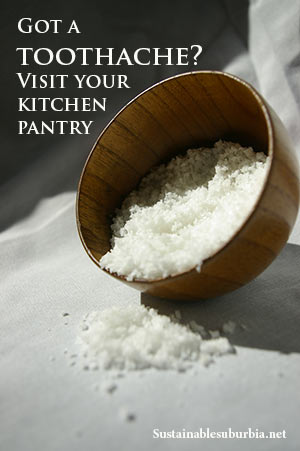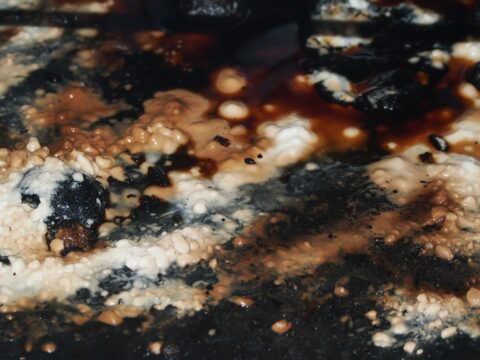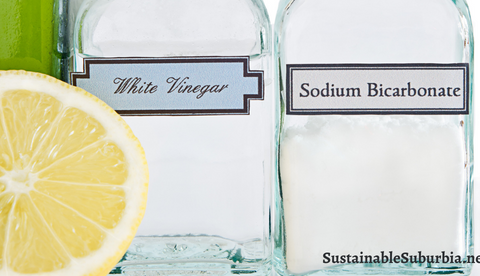 Most of us will have some traditional remedy lying around the kitchen to relieve a toothache in a pinch. But, if you’re anything like me, there were some remedies your grandmother swore by that left you a little doubtful.
Most of us will have some traditional remedy lying around the kitchen to relieve a toothache in a pinch. But, if you’re anything like me, there were some remedies your grandmother swore by that left you a little doubtful.
So you splash out on highly branded products which manufacturers promise will relieve your ailments, rather than using a natural alternative which is most likely kinder, cost effective and within easy reach.
When a recent tooth infection sent me rushing to the dentist, I decided to find out whether my mother’s advice to gargle with warm salty water to drive away infection had any basis in scientific fact. And it turns out, although treating a painful tooth by sucking an aspirin is a load of old hogwash, there are many traditional remedies we could add to our medicinal arsenal which actually do work.
The wonder spice
It’s a bit on the stinky side, but this little natural wonder is an essential oil with the anti-microbial properties of eugenol. Clove oil can be used as a topical antiseptic and is very effective as a local anesthetic.
One study found that clove oil had the same numbing affects when applied to gums as benzocainen, an active ingredient used in anesthetics. Clove oil has also been approved in Germany for use as a topical antiseptic and anesthetic. And conveniently you can pick up a bottle quite cheaply from most health stores.
Clove oil can be used by applying a small amount to a cotton ball or cotton tip, and dab on to the affected area. Studies have revealed that if used in large quantities there are side effects, such as liver and respiratory damage, however small doses are inconsequential.
A squeeze of lemon
Lemon juice is a natural and cheap alternative to lightening hair colour, but as an effective bleaching agent for teeth it could potentially do more harm than good if not used correctly. Lemon has an acidic pH level of about 2 – the same acidic level as a can of coca cola. So it’s probably a good idea to consult your dentist for expert advice before using lemon as a natural teeth whitener.
And a splash of baking soda
Bicarb soda or baking soda are the common names for sodium bicarbonate which is formed by combining carbon dioxide through a solution of sodium carbonate, then dried to form crystalline mineral salts. The chemical structure makes it a mild abrasive, which is effective for removing stains on teeth.
If you prefer greener alternatives to commercial products, bicarb soda can be combined with hydrogen peroxide to make a non-fluoride toothpaste, with a dash of peppermint oil for flavour. When measuring abrasivity levels, the FDA found that baking soda is actually less abrasive than other toothpastes on the market.
You can also make a mouth rinse by mixing a heaped spoonful of baking soda in a small glass of lukewarm water, dissolve the soda then swish the mixture in your mouth. This is a great natural alternative for oral health in between dental hygiene visits.
Oil Pulling with Coconut Oil
The popularity of coconut oil is steadily climbing as consumers become aware of its wonderful anti-viral and anti-bacterial benefits, thanks in part to books by Dr Bruce Fife – otherwise known as ‘Dr Coconut’ – which help spread the word. And, I’m definitely not alone in my oil pulling practice, as google is full of anecdotes and insights into the ancient Ayurvedic technique.
Oil pulling is the process of putting a heaped spoonful of coconut oil into the mouth and swishing the lard-like substance through your teeth, over the tongue and from cheek to cheek for about 20 minutes. Sounds disgusting, and it might not be for everyone. However, Dr Coconut swears by it, saying the oil grabs hold of all the ‘gunk’ in the mouth with a cleansing and healing affect.
It has also been known to whiten and brighten teeth with continued prolonged use. So, get swishing.
Note to self: Always brush teeth straight after. A little gargling with warm salty water before you brush helps to wash away any residue oil.
Salt soothes our wounds
My mother’s home remedy for healing mouth infections was not superfluous, salt has been used as an essential ingredient in medical practices since the ancient Egyptians. It’s a fact: blood, sweat and tears all contain salt, and both the skin and the eyes are protected from infectious germs by the anti-bacterial effect of salt. And, the antiseptic and bactericidal qualities of dental salt (sea salt) help remove plaque which is a cause of gingivitis and caries.
So gargling with salted water does provide relief to a mouth infection and can speed up recovery time from those horrible injuries, such as biting the inside of your cheek or your tongue.
And it’s so easy, just swish with 1 teaspoon of salt in 4 ounces of warm water three times a day if you have an infection to heal. And, even if I’m stating the obvious, don’t swallow, spit it out.
Salt water gargling is also effective at treating painful gums as the salt will draw out some of the infection.
Can I have some ice with that?
You may be skeptical, but according to one medical study, it’s perfectly true – severe dental pain can be relieved by massaging ice between the thumb and the index finger of the hand. This is the part of the hand in acupressure known as L14, which is a spot believed to interact with pain in various regions of the body. While massaging this area is helpful, it is the ice that is crucial in reducing dental pain as it causes cold signals to interfere with the pain signals. If your pain is on the right side of your mouth, massage the right hand, and vice versa.
When a dental emergency occurs in the middle of the night or if the next available appointment at the dentist is days away, it’s handy to know that some good old-fashioned home remedies will help ease the pain – or possibly prevent such an emergency to occur in the first place.
Now over to you: have you ever used any of these home remedies on your teeth? If so, did they work for you? Or, do you have a better tip?
About the Author:
Megan McAuliffe is a writer, journalist and blogger writing for sustainable and ethical buisness’ on issues relating to community and lifestyle. She also writes on topics relating to dental health for www.londonlingualbraces.com. You can find her on Twitter @Mxxsy.
Of course, being a Tuesday, this post was shared over at I Blog On Tuesdays (IBOT) and Little House Friday DIY Linkup.
Image credit: Happy Krissy





I once used th ice method on the hand method. It’s seemed to giv relief but I wasn’t sur if it wasmin ver matter or distraction…but it worked so I den mind. I also tried first a method I had googled which was to rub toothpaste over it. This brough mome near relief but overall I wouldn’t call I effective in an way
That’s interesting about the toothpaste method, Travelling Macs, I hadn’t heard of that before. Good to know the ice method seemed to work though.
Thanks for stopping by!
My Mom always put powdered alum on my tooth ache area . . . it worked.
Be Blessed as you are a blessing to us!
Great Post!
Interesting! Thanks for sharing Renee. Do you know, I don’t know what my mum did? Maybe I never had a toothache! Glycerin for mouth ulcers I remember though.
The more I look into toothpaste alternatives, the more I like the idea of bicarb. With the coconut oil, does it need to be in lard form? I live in a part if the country that my oil is only solid two weeks of the year – no matter what quality it is – so thinking I might night to refrigerate it for a bit prior if that’s the case…….
Hello from #teamIBOT
Pretty sure it’s ok in liquid form – even if it were solidified, it would melt once you swished it
Thanks for the input Teray – and yeah, that makes sense!